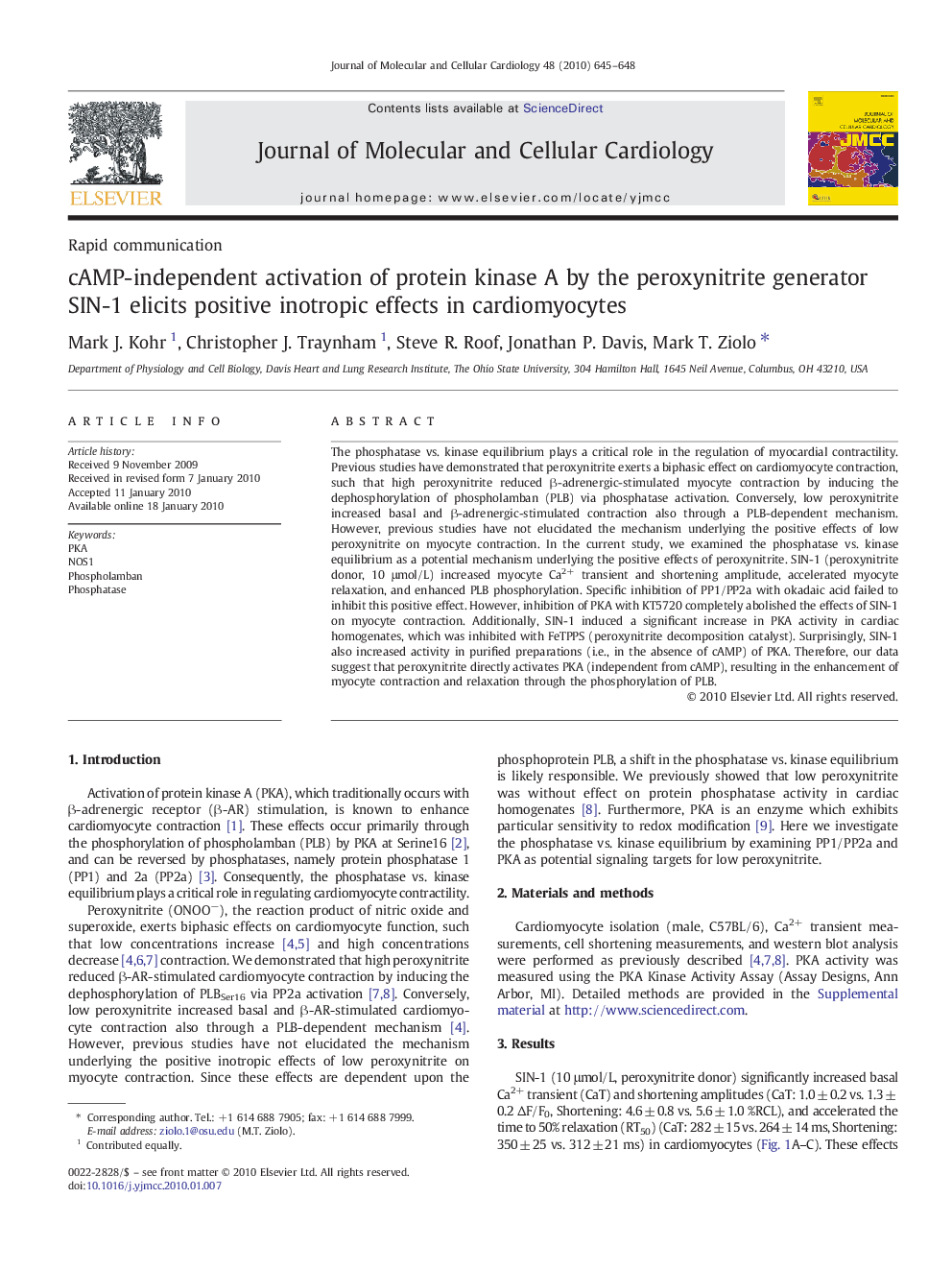| Article ID | Journal | Published Year | Pages | File Type |
|---|---|---|---|---|
| 10954145 | Journal of Molecular and Cellular Cardiology | 2010 | 4 Pages |
Abstract
The phosphatase vs. kinase equilibrium plays a critical role in the regulation of myocardial contractility. Previous studies have demonstrated that peroxynitrite exerts a biphasic effect on cardiomyocyte contraction, such that high peroxynitrite reduced β-adrenergic-stimulated myocyte contraction by inducing the dephosphorylation of phospholamban (PLB) via phosphatase activation. Conversely, low peroxynitrite increased basal and β-adrenergic-stimulated contraction also through a PLB-dependent mechanism. However, previous studies have not elucidated the mechanism underlying the positive effects of low peroxynitrite on myocyte contraction. In the current study, we examined the phosphatase vs. kinase equilibrium as a potential mechanism underlying the positive effects of peroxynitrite. SIN-1 (peroxynitrite donor, 10 μmol/L) increased myocyte Ca2+ transient and shortening amplitude, accelerated myocyte relaxation, and enhanced PLB phosphorylation. Specific inhibition of PP1/PP2a with okadaic acid failed to inhibit this positive effect. However, inhibition of PKA with KT5720 completely abolished the effects of SIN-1 on myocyte contraction. Additionally, SIN-1 induced a significant increase in PKA activity in cardiac homogenates, which was inhibited with FeTPPS (peroxynitrite decomposition catalyst). Surprisingly, SIN-1 also increased activity in purified preparations (i.e., in the absence of cAMP) of PKA. Therefore, our data suggest that peroxynitrite directly activates PKA (independent from cAMP), resulting in the enhancement of myocyte contraction and relaxation through the phosphorylation of PLB.
Keywords
Related Topics
Life Sciences
Biochemistry, Genetics and Molecular Biology
Cell Biology
Authors
Mark J. Kohr, Christopher J. Traynham, Steve R. Roof, Jonathan P. Davis, Mark T. Ziolo,
